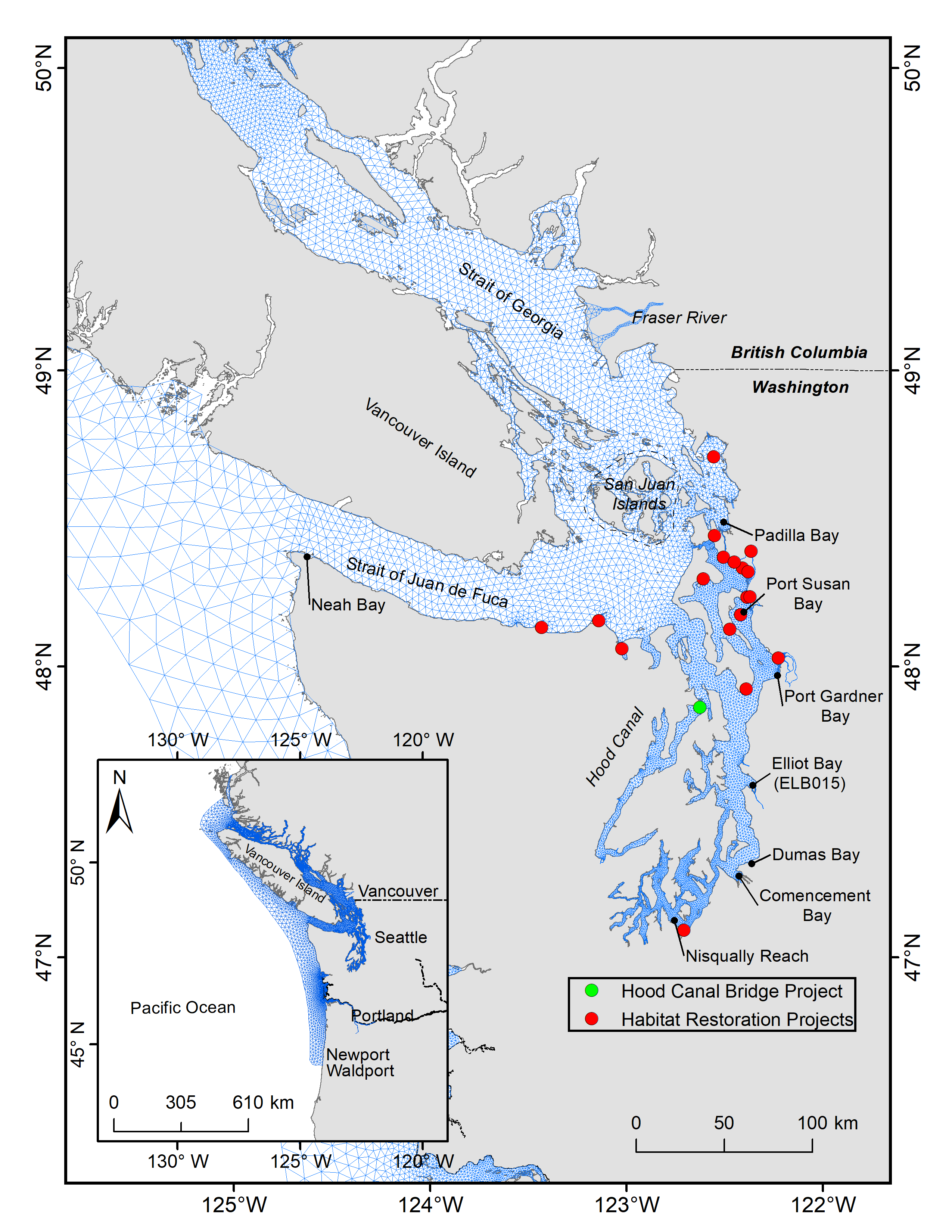Habitat Restoration
Funding Sources: (a) Estuary and Salmon Restoration Program (ESRP), Washington State Department of Fish and Wildlife, (b) Salmon Recovery Funding Board, Washington State Recreation and Conservation Office

Estuarine and coastal hydrodynamic processes are sometimes neglected in the design and planning of nearshore restoration actions. Despite best intentions, efforts to restore nearshore habitats can result in poor outcomes if water circulation and transport are not properly addressed. Land-use constraints can lead to selection of suboptimal restoration alternatives that may result in undesirable consequences, such as flooding, deterioration of water quality, and erosion, that require immediate remedies and costly repairs. Quantitative models designed for application to the nearshore environment can minimize uncertainty about restoration goals, such as recovery of tidal exchange, supply of sediment and nutrients, and establishment of fish migration pathways. The Salish Sea Model (SSM) including Puget Sound, in the state of Washington, was developed based on an unstructured grid framework specifically to provide the ability to define the complex shoreline. A high-resolution version of the model developed by PNNL is described by Yang and Khangaonkar (2010) and Khangaonkar and Yang (2011).
Prior to development of basin-wide models such as SSM, numerous sub-basin-scale models were developed. These models were intended to assist with nearshore habitat restoration design and analysis, and to answer the question, "Can we achieve beneficial restoration outcomes at small scale, as well as estuary-wide." Examples of restoration projects in the area illustrate the utility of the models in conducting feasibility assessments through simulation of important nearshore processes such as circulation in complex multiple tidal channels, wetting and drying of tide flats, and water quality and sediment transport.

Stillaguamish Estuary
Skagit Estuary
Snohomish Estuary
Nisqually Estuary
Multi-Estuary